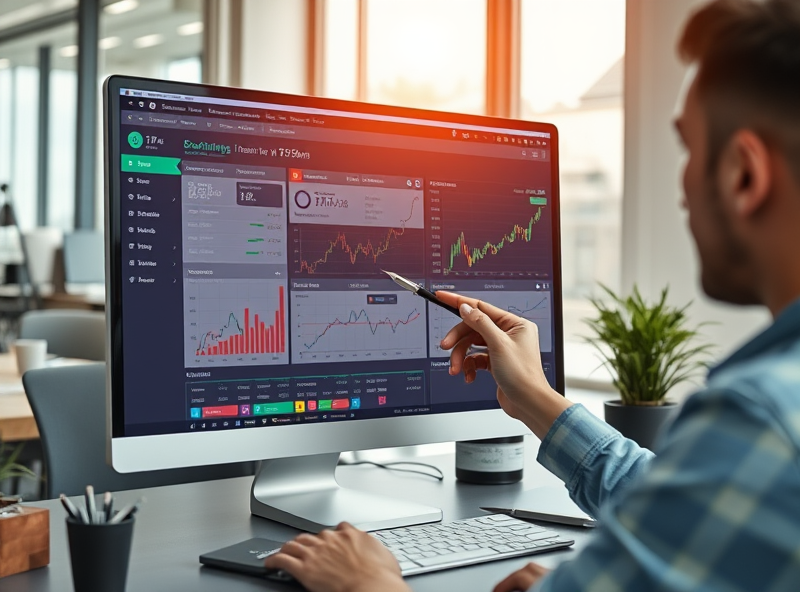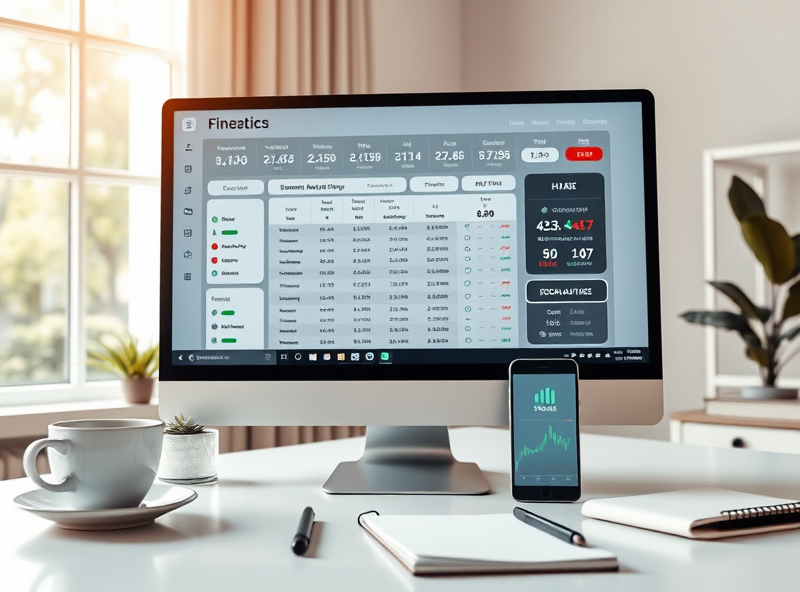
Smart Stock Screening: Find Your Ideal Stocks Fast
Understanding Stock Screeners and Their Power

Stock screeners are powerful tools that help investors quickly filter and identify stocks that meet specific criteria. Whether you’re a beginner or a seasoned trader, understanding how to use these tools can save you hours of research and help you make smarter investment decisions.
At their core, stock screeners allow you to sort through thousands of stocks based on customizable filters like market capitalization, P/E ratio, dividend yield, sector, and technical indicators. This means you can instantly narrow down your choices to stocks that align with your investment goals and risk tolerance.
For example, if you’re looking for undervalued companies with strong earnings growth, you can set filters for low P/E ratios and high EPS growth. Or, if you’re a dividend investor, you can screen for companies with a consistent dividend history and a yield above a certain threshold.
Many platforms, such as Yahoo Finance and Finviz, offer free stock screeners with user-friendly interfaces. More advanced tools like those on Morningstar or Bloomberg provide deeper insights and institutional-grade data, often at a cost.
By using stock screeners effectively, you can eliminate emotional bias, stay disciplined in your strategy, and uncover opportunities that may not be immediately obvious. It’s like having a personal assistant that scans the entire market for you in seconds.
For a deeper dive into how to use stock screeners effectively, you can check out this helpful guide from Investopedia: https://www.investopedia.com/terms/s/stockscreener.asp
Setting Key Financial Filters for Smarter Picks

When using a stock screener, setting the right financial filters is essential to narrowing down thousands of stocks into a manageable list of high-potential candidates. These filters help you focus on companies that meet your specific investment goals, whether you’re looking for growth, value, or income.
Start with the basics: market capitalization, P/E ratio, and dividend yield. Market cap helps you filter by company size—small-cap for aggressive growth, large-cap for stability. The price-to-earnings (P/E) ratio lets you assess how a stock is valued relative to its earnings. A lower P/E may indicate undervaluation, but it’s important to compare it within the same industry. Dividend yield is key for income-focused investors who want steady cash flow.
Next, consider financial health indicators like debt-to-equity ratio and current ratio. These tell you how well a company manages its debt and short-term obligations. A low debt-to-equity ratio and a current ratio above 1.5 are generally signs of financial strength.
For growth-focused investors, filters like revenue growth and earnings per share (EPS) growth over the past 3–5 years can help identify companies with strong upward momentum. Consistent growth is often a sign of good management and a scalable business model.
Finally, don’t overlook return on equity (ROE), which measures how efficiently a company uses shareholder funds to generate profit. A higher ROE often reflects a competitive advantage or strong operational efficiency.
By combining these filters, you can create a custom stock screening strategy that aligns with your investment philosophy. It’s a smarter, faster way to find stocks that truly fit your needs.
For more on financial ratios and screening, check out this resource from Investopedia: https://www.investopedia.com/terms/f/financial-ratio.asp
Top Free Screeners for Global and Korean Markets

Finding the right stocks quickly can feel overwhelming, especially when navigating both global and Korean markets. Thankfully, there are powerful free stock screeners that can help you filter through thousands of stocks based on your personal investment criteria like market cap, P/E ratio, dividend yield, and more.
For global markets, one of the most trusted free tools is TradingView (https://www.tradingview.com/screener/). It offers a highly customizable screener with real-time data, technical indicators, and the ability to screen across multiple exchanges including the US, Europe, and Asia. You can set alerts, compare charts, and even use community-generated screeners.
For Korean investors, Naver Finance and Daum Finance offer free screeners tailored to the KOSPI and KOSDAQ markets. Naver’s screener is particularly user-friendly, allowing you to filter by financial ratios, sector, and recent performance. It’s a great starting point for retail investors who want to explore the Korean stock market without complex tools.
Using these screeners regularly can help you make more informed decisions, spot trends early, and avoid emotional investing. They’re essential tools for anyone who wants to build a smarter, more strategic portfolio without spending a fortune.
Risk Management Tips After Screening Stocks

After using a stock screener to identify promising investment opportunities, the next crucial step is managing your risk effectively. Even the most well-researched stocks can fluctuate due to market volatility, economic shifts, or company-specific news. That’s why a strong risk management strategy is essential to protect your capital and grow your portfolio sustainably.
Start by diversifying your investments. Don’t put all your money into one stock or sector—spread it across industries and asset classes to reduce the impact of a single underperformer. Next, determine your risk tolerance. This means understanding how much loss you can emotionally and financially handle. Based on this, set stop-loss orders to automatically sell a stock if it drops below a certain price. This helps limit potential losses without requiring constant monitoring.
Another helpful tactic is position sizing. Instead of investing the same amount in every stock, adjust your investment based on the risk level of each asset. For higher-risk stocks, consider smaller positions. Finally, regularly review and rebalance your portfolio. Markets change, and so should your holdings to stay aligned with your goals and risk profile.
For more on building a resilient investment strategy, you can explore guidance from the U.S. Securities and Exchange Commission (SEC): https://www.investor.gov/introduction-investing/basics/investment-products/stocks







